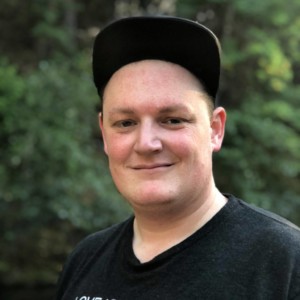THE LEGACY OF rapper Tupac Shakur has many geographic touch points. The first is New York City, where Shakur was born in 1971. Then there’s the most famous, Los Angeles, where the West Coast hip-hop icon resided during his tragically short reign as one of the world’s greatest living rappers. Sadly, Shakur’s legacy will also hover over Las Vegas, the site of his as yet unsolved 1996 murder.
By comparison, the time Shakur spent in Marin City may seem like a footnote. When it comes to Tupac, however, no aspect of his story should be considered insignificant. While few other vocal recording artists have amassed a larger mythos in death — trying to separate fact from fiction can be a tall order as Shakur’s legend continues to grow — the truth of his story is plenty incredible on its own.
Prior to moving to Marin in 1988, Afeni Shakur had already uprooted her children from New York City to Baltimore. A devout member of the Black Panther Party, Afeni arranged for a fellow Panther to watch over Tupac and his sister, Sekyiwa, in Marin City while she stayed in Baltimore and saved for another ticket to California. Eventually, Afeni would join her children, but by all accounts, Tupac’s time in Marin was one of struggle and extraordinary responsibility.
In contrast, former Tamalpais High School teacher Barbara Owens has fond memories from Shakur’s brief period of time in her classroom. She says that it wasn’t until much later that she understood how much her student was truly dealing with.
“I knew he was challenged,” Owen says, “but I didn’t know how, in particular, other than by being an African American student from Marin City at a predominantly white school.”
In his acclaimed 2001 book on Shakur, Holler If You Hear Me, author Michael Eric Dyson describes how Afeni’s crack addiction was exacerbated by her move to Marin City, noting that it put her “in dangerous proximity to the drug’s infamous center of distribution in Northern California’s black ghettos.” At some point, the situation with his mother got so bad that Tupac moved out to live with friends in an abandoned apartment. He also started selling crack as a way to afford food. Despite these substantial hardships, Shakur’s grades apparently never slipped.
For Owens, the memory is of a bright, exceptionally talented actor.
In announcing her departure from the Tamalpais Union High School District board of trustees earlier this summer, Owens noted that though her 35-year career has been packed with cherished memories, one of her favorites will always be of the time she tasked Shakur with reading some Shakespeare aloud.
“I asked him to take the part of Othello,” she says. “All of the students read the play aloud and he took that part. It was absolutely, hands down, one of the most stellar performances of Shakespeare, let alone Othello, that I have ever heard.”
Hearing Owens describe the scene, one can almost imagine Shakur’s robust baritone — the same voice that would later anchor beloved hits like “California Love” and “Dear Mama” — reverberating off the classroom walls.
“When he got to the scene where Othello is having a critical argument with himself about whether or not he’s going to snuff out Desdemona,” Owens recalls, “he read it brilliantly. I stopped the class and said, ‘I want you all to remember this moment. You will never ever, in your lifetime, hear Othello as well as you just heard it now.’ ”
Eventually, Shakur would drop out of Tamalpais High School.
“He could no longer pretend school fit his view of the world,” writes Dyson of Shakur’s mindset at the time. “Neither could he reconcile the poverty that he saw … he simply stopped going.”
Before long, Shakur’s life would take new perch in the city of Oakland. That’s where, in 1989, he attended a poetry class taught by Leila Steinberg, who would go on to act as a mentor to Shakur. Shortly thereafter, Steinberg introduced him to Atron Gregory. The two would go on to work together extensively, with Gregory serving as a manager and executive producer.
Though the late rapper’s lyrics touch on many subjects, his work never explicitly addressed the time he spent in Marin City. Regardless, Gregory believes there is still something within Shakur’s music that’s drawn from the time he spent here.
“When he wrote,” Gregory says, “this is where he was writing. This is what he was seeing. This is what he was around and what he was doing and what he was experiencing, so in that regard, the Bay Area was extremely influential.”
Read our transcript of Tupac’s first interview from when he was a student at Tamalpais High here.
Zack Ruskin writes on music, cannabis, and culture. His bylines include Vanity Fair, Billboard, Entertainment Weekly, Variety, Merry Jane, and the San Francisco Chronicle. He lives in San Francisco with his wife, Danielle, and their cat, McCovey.



